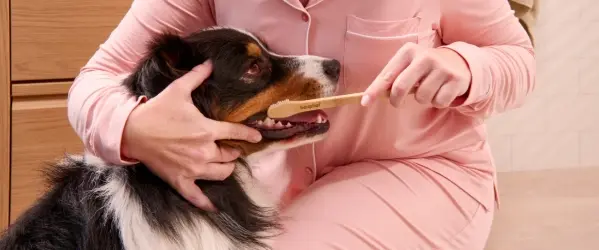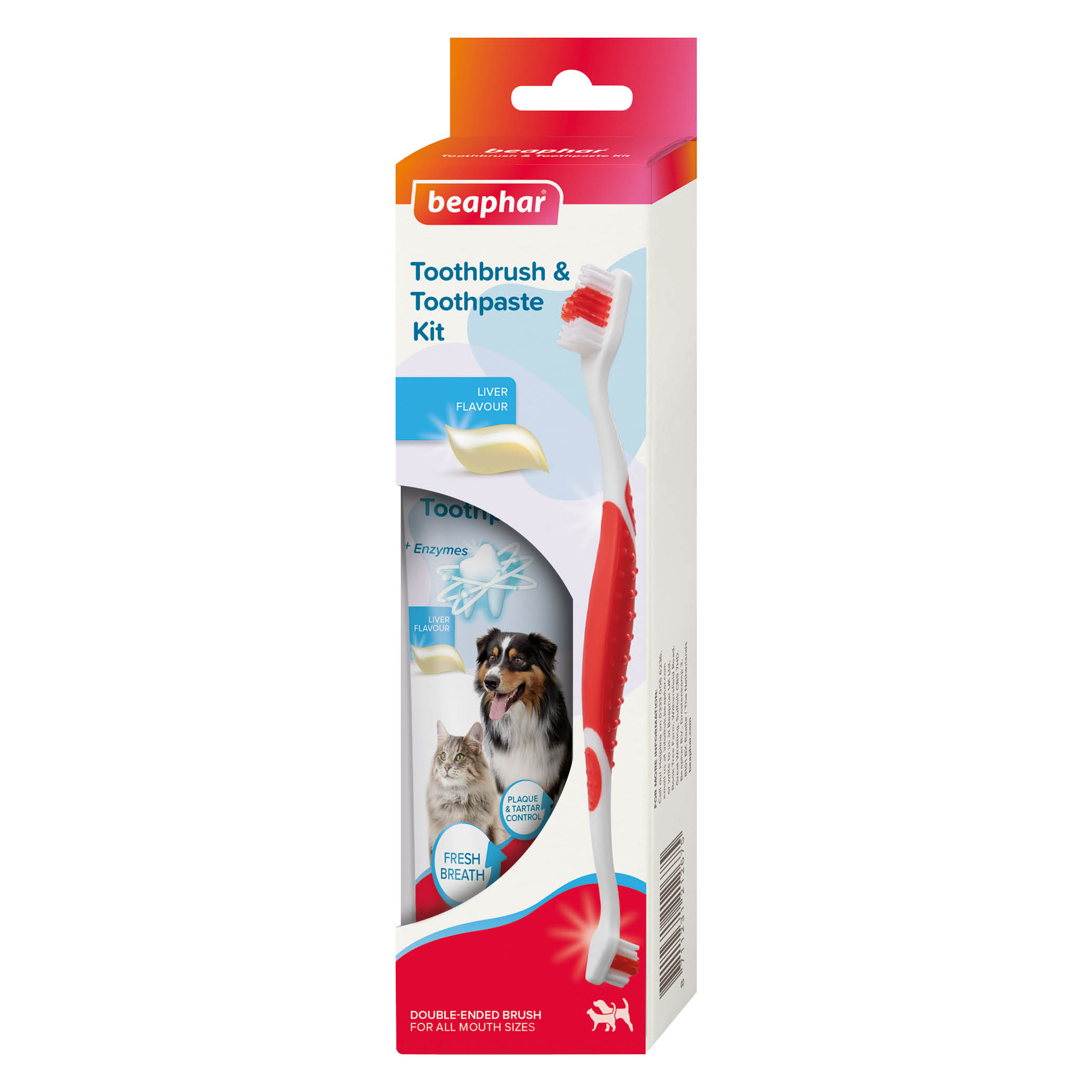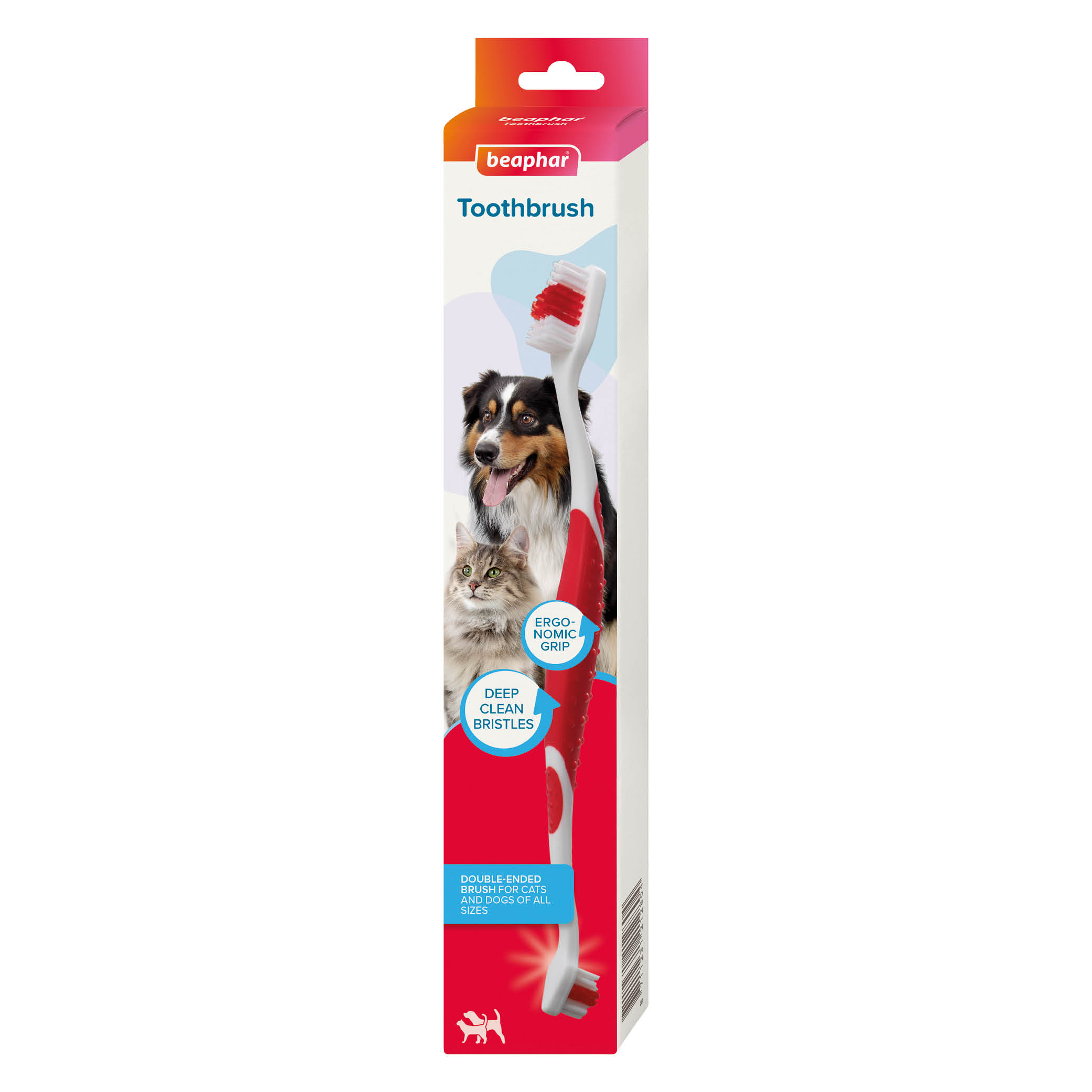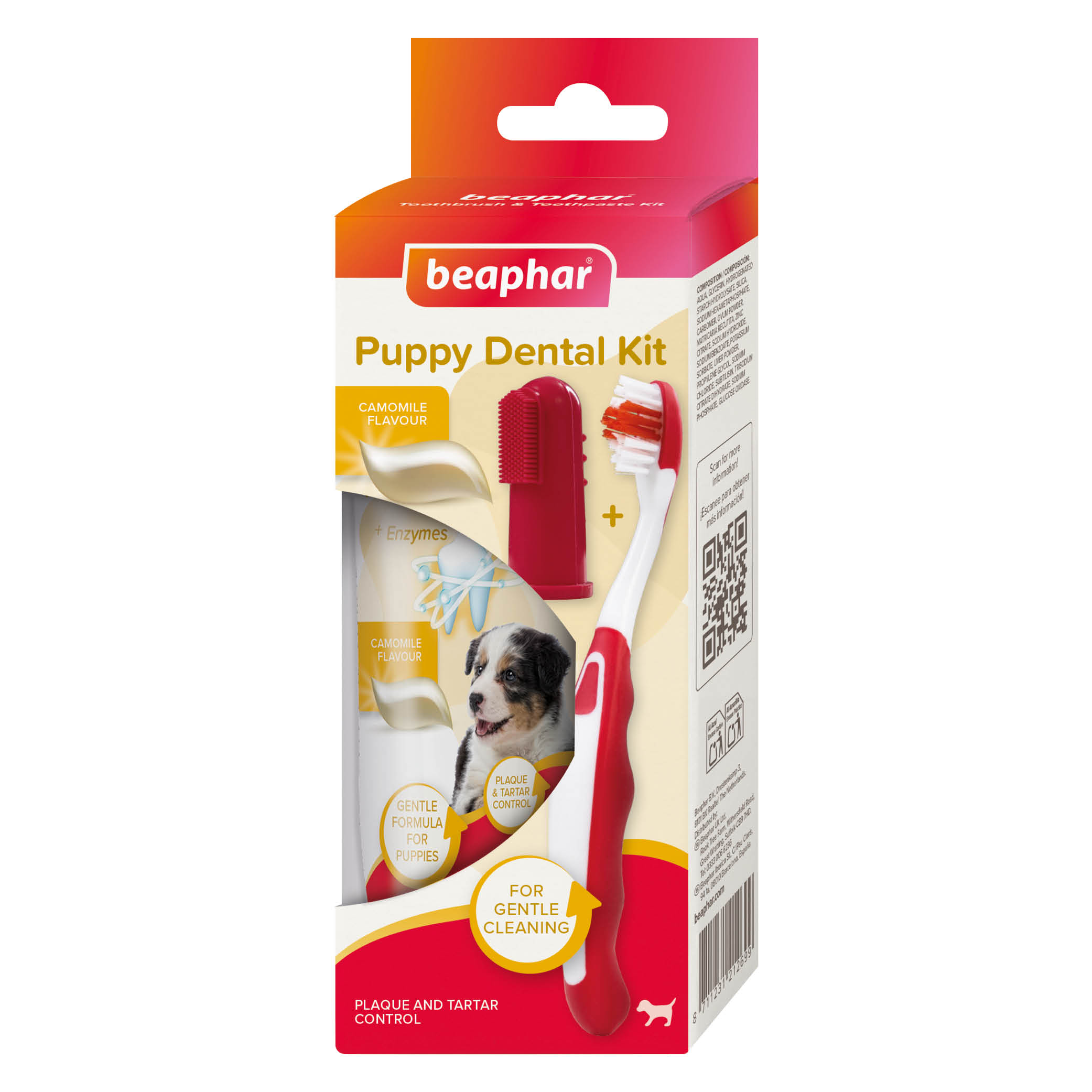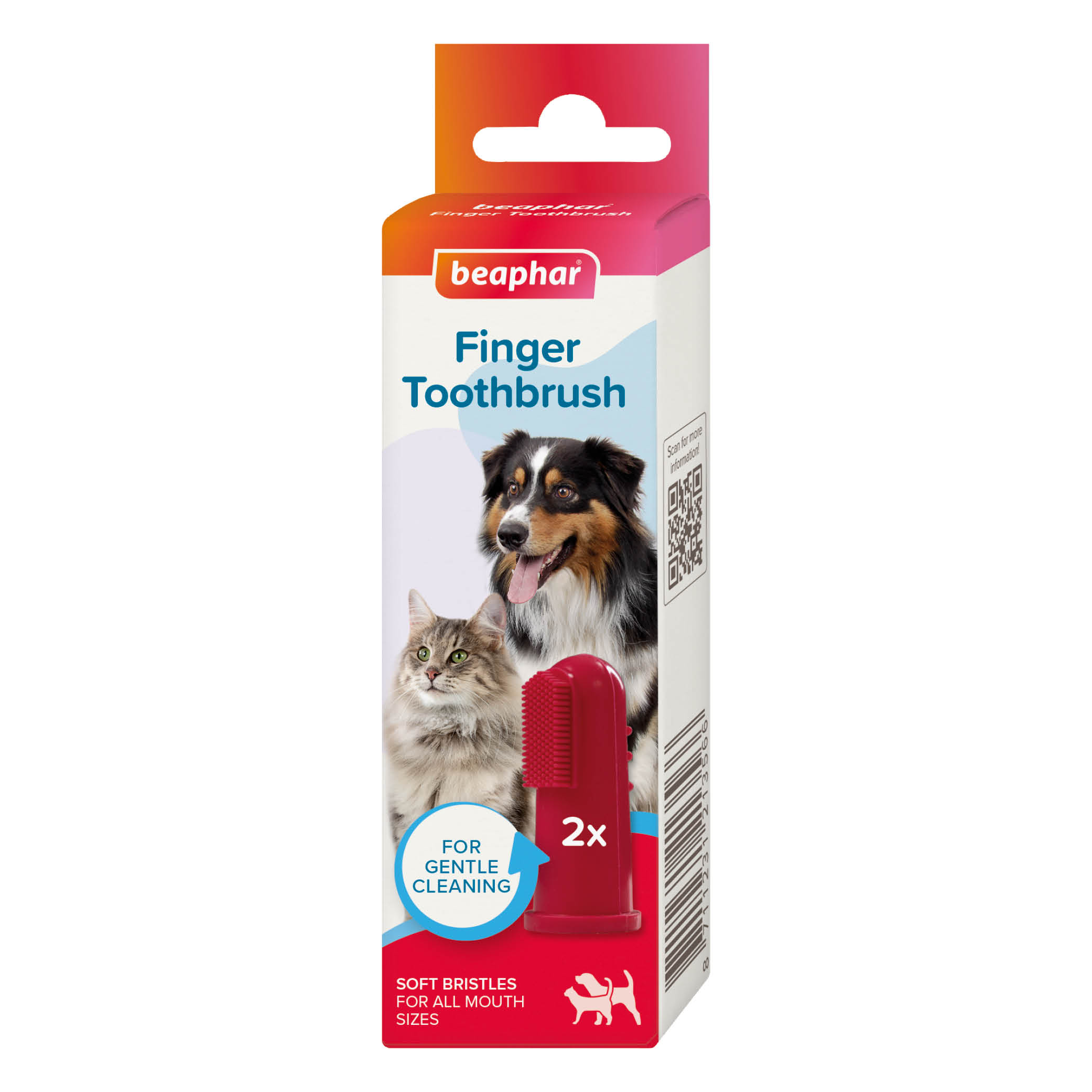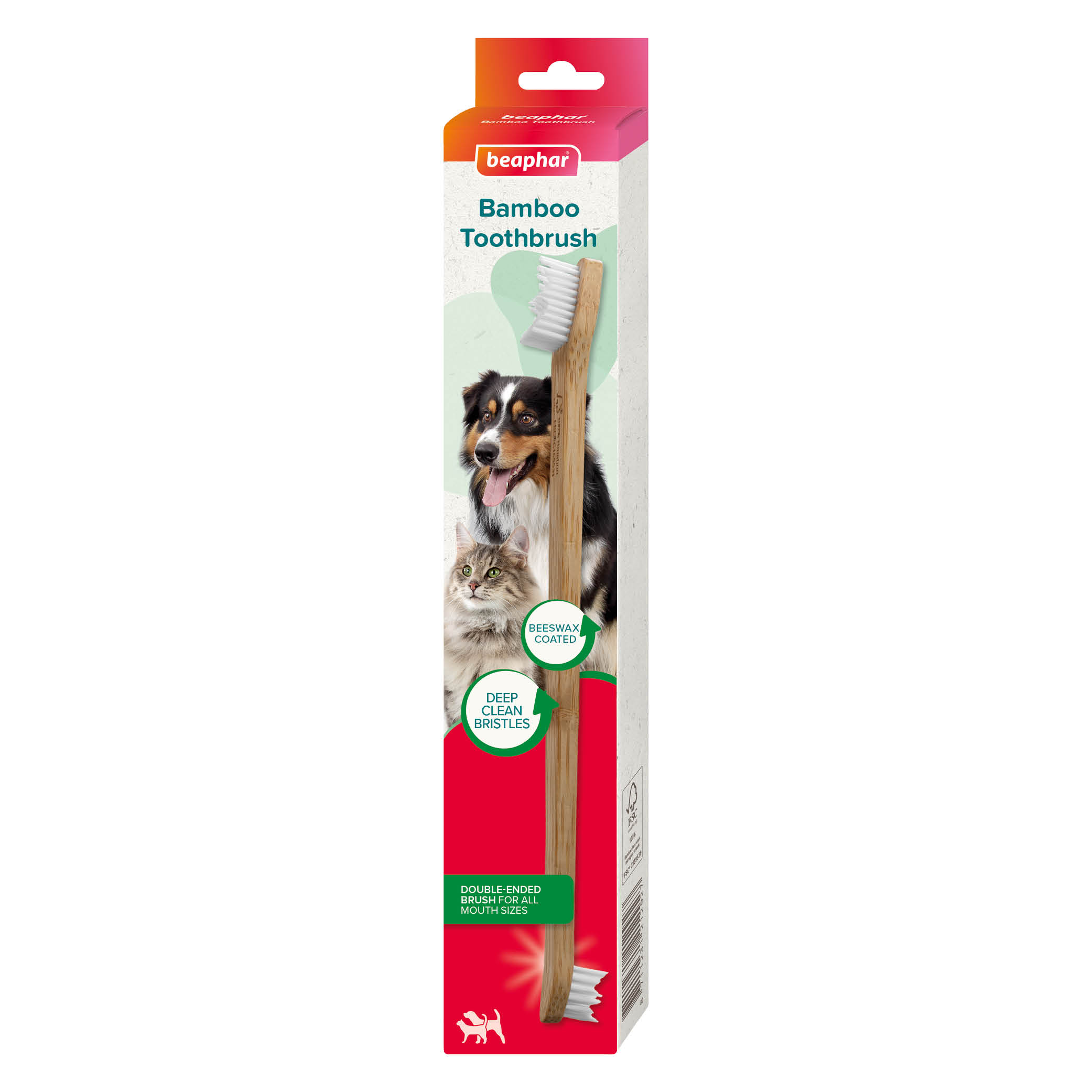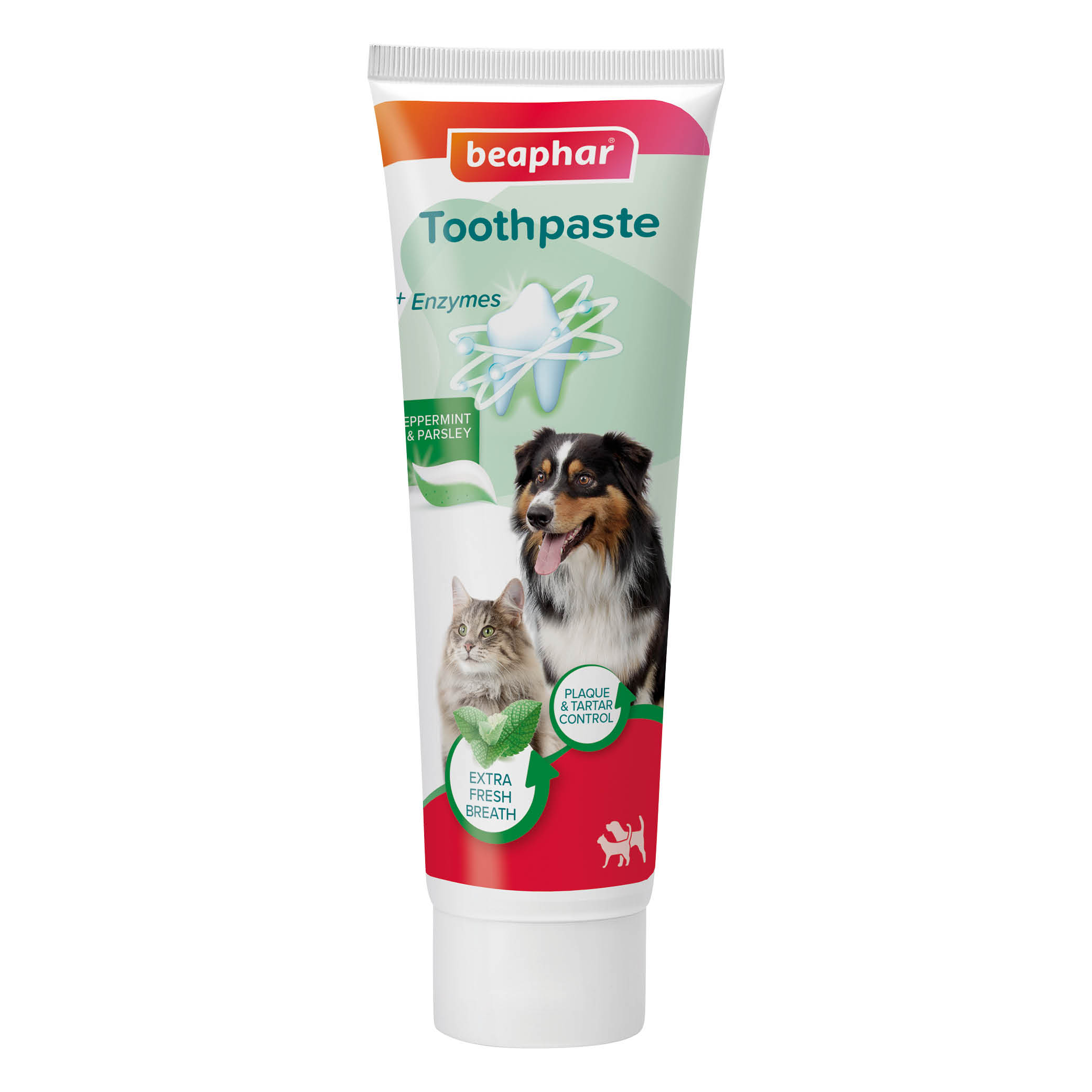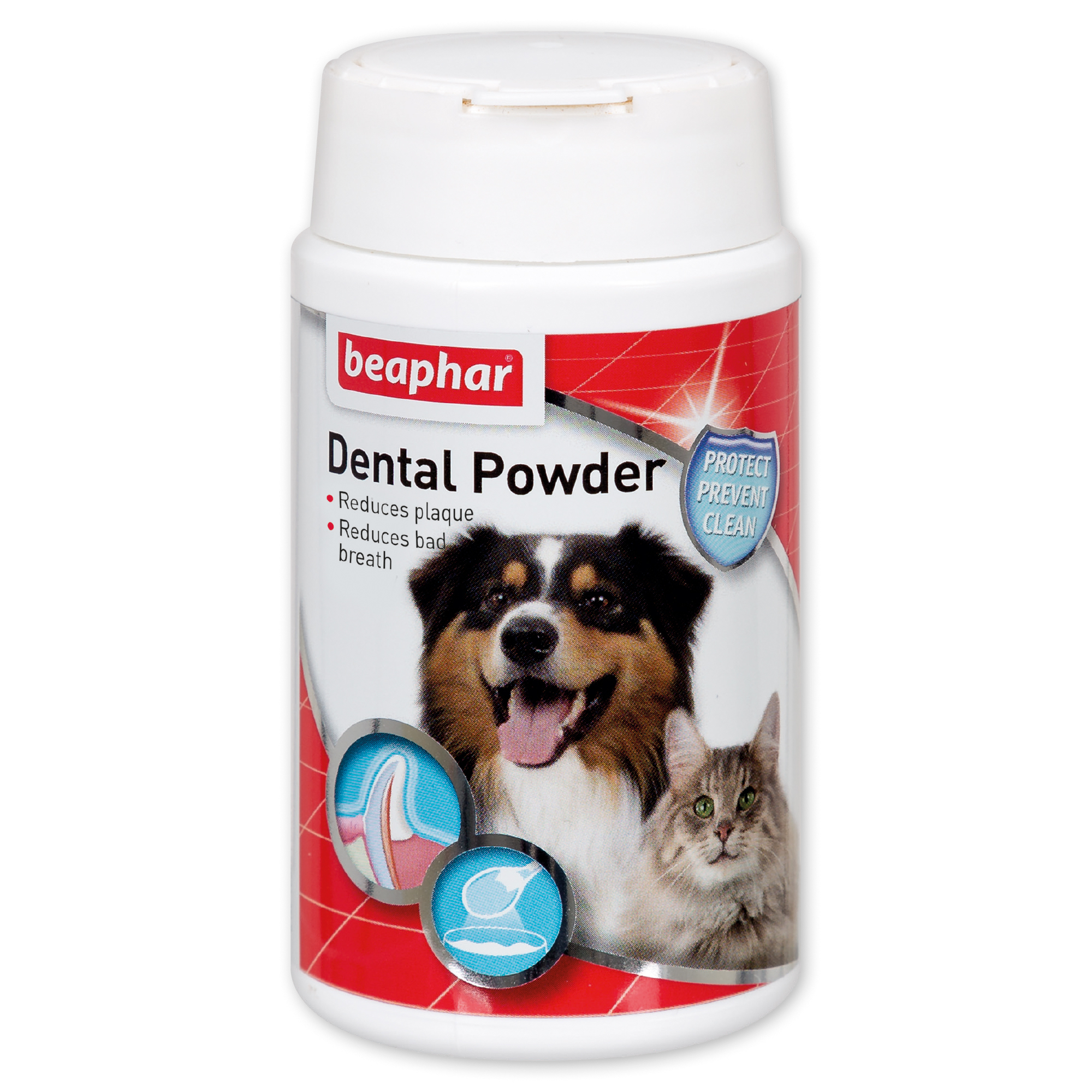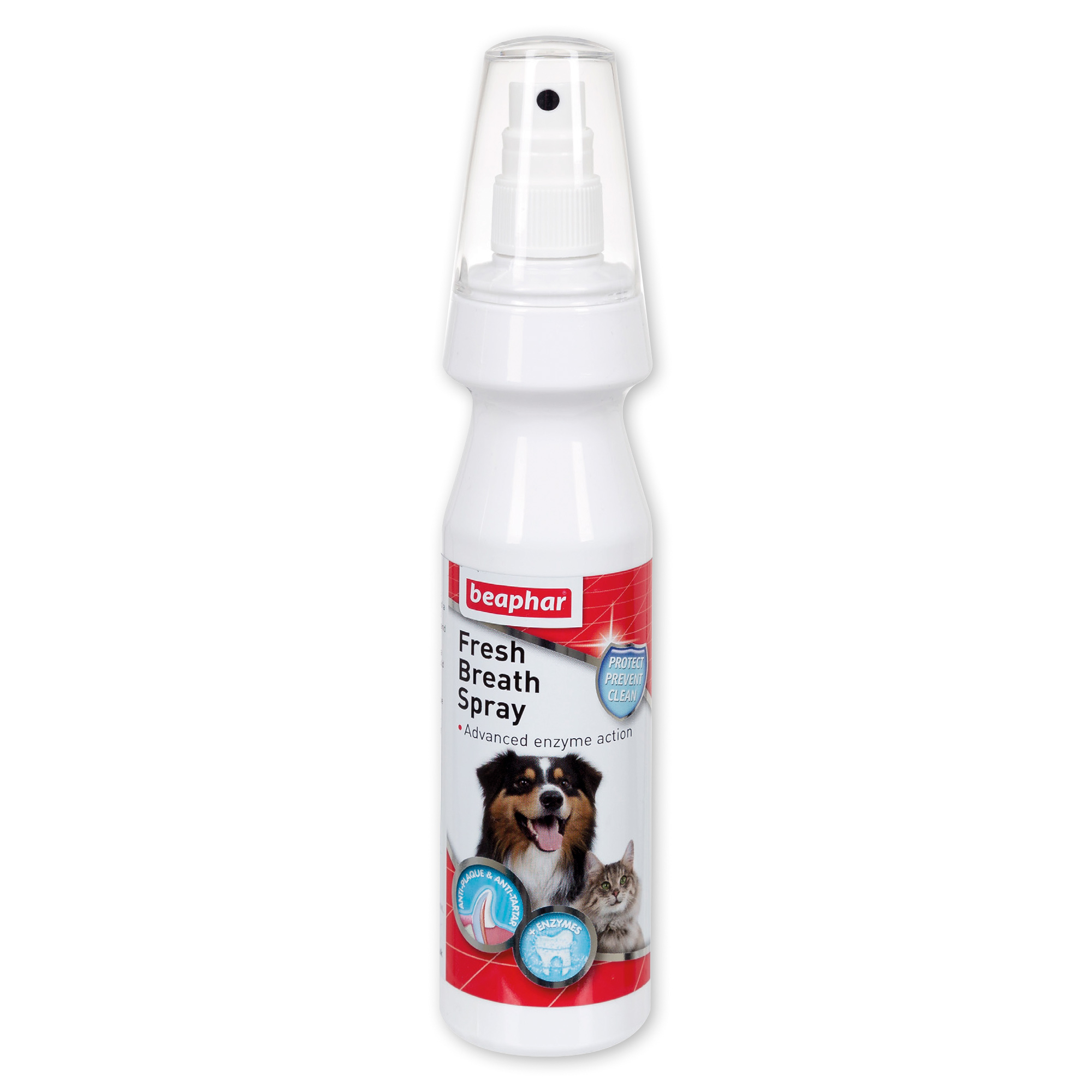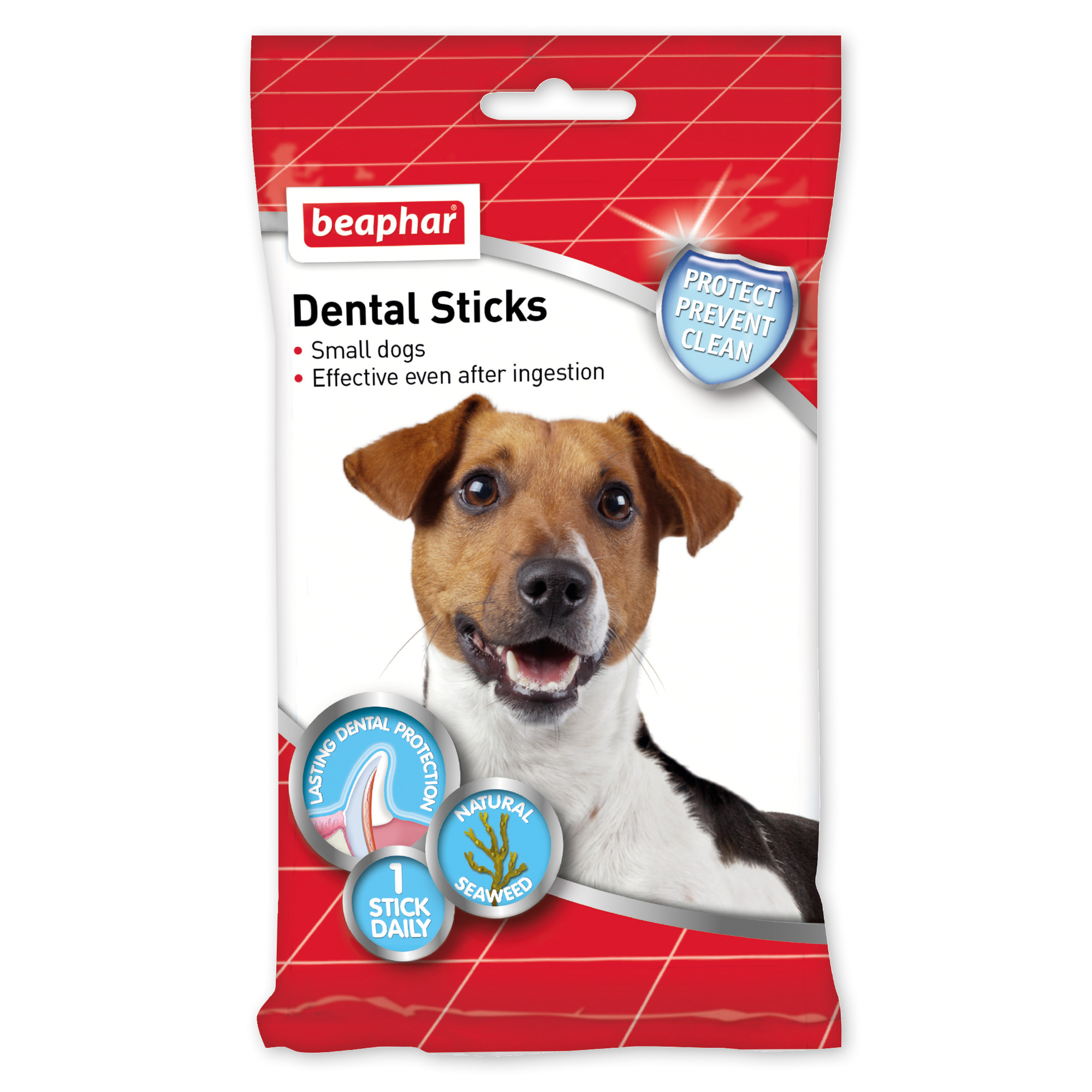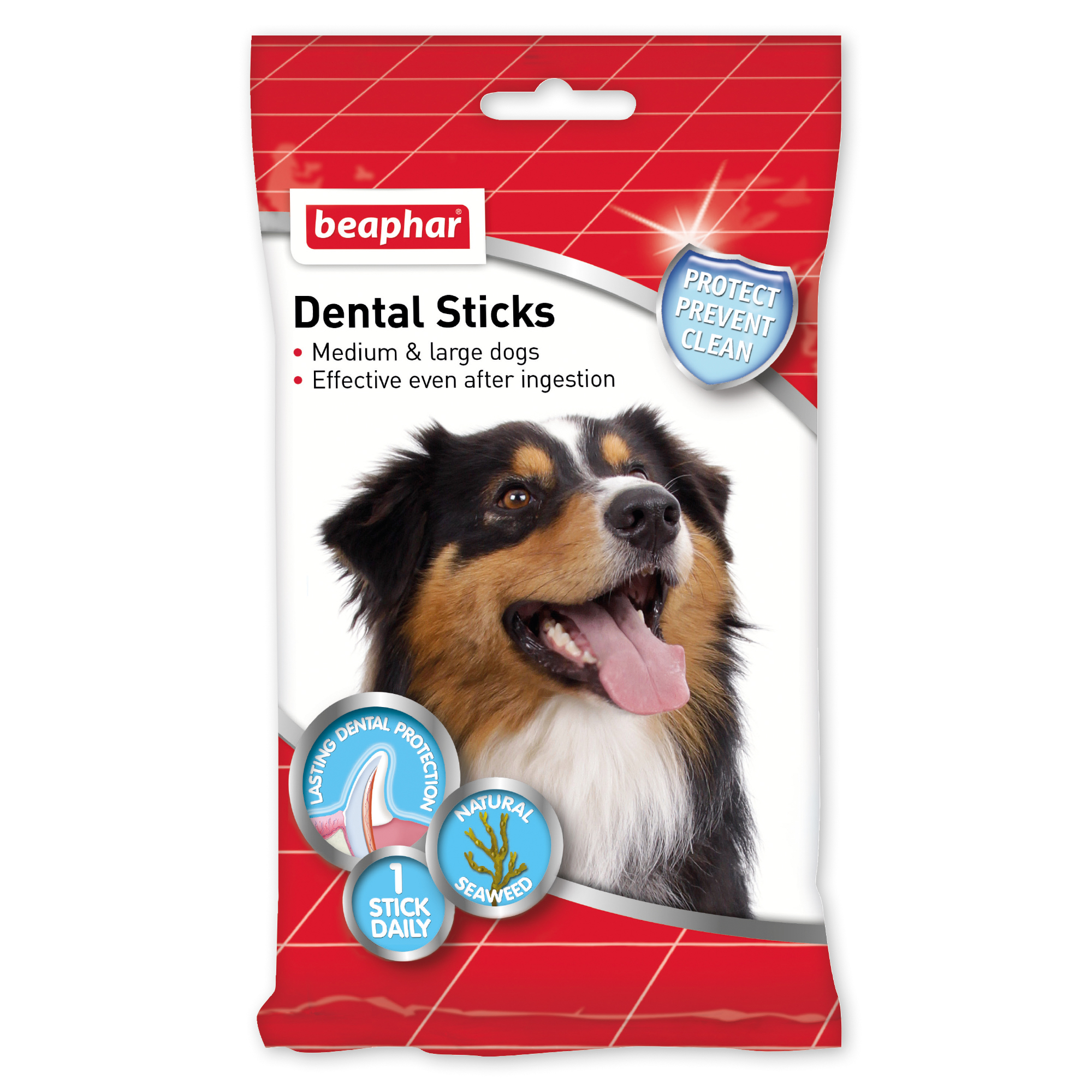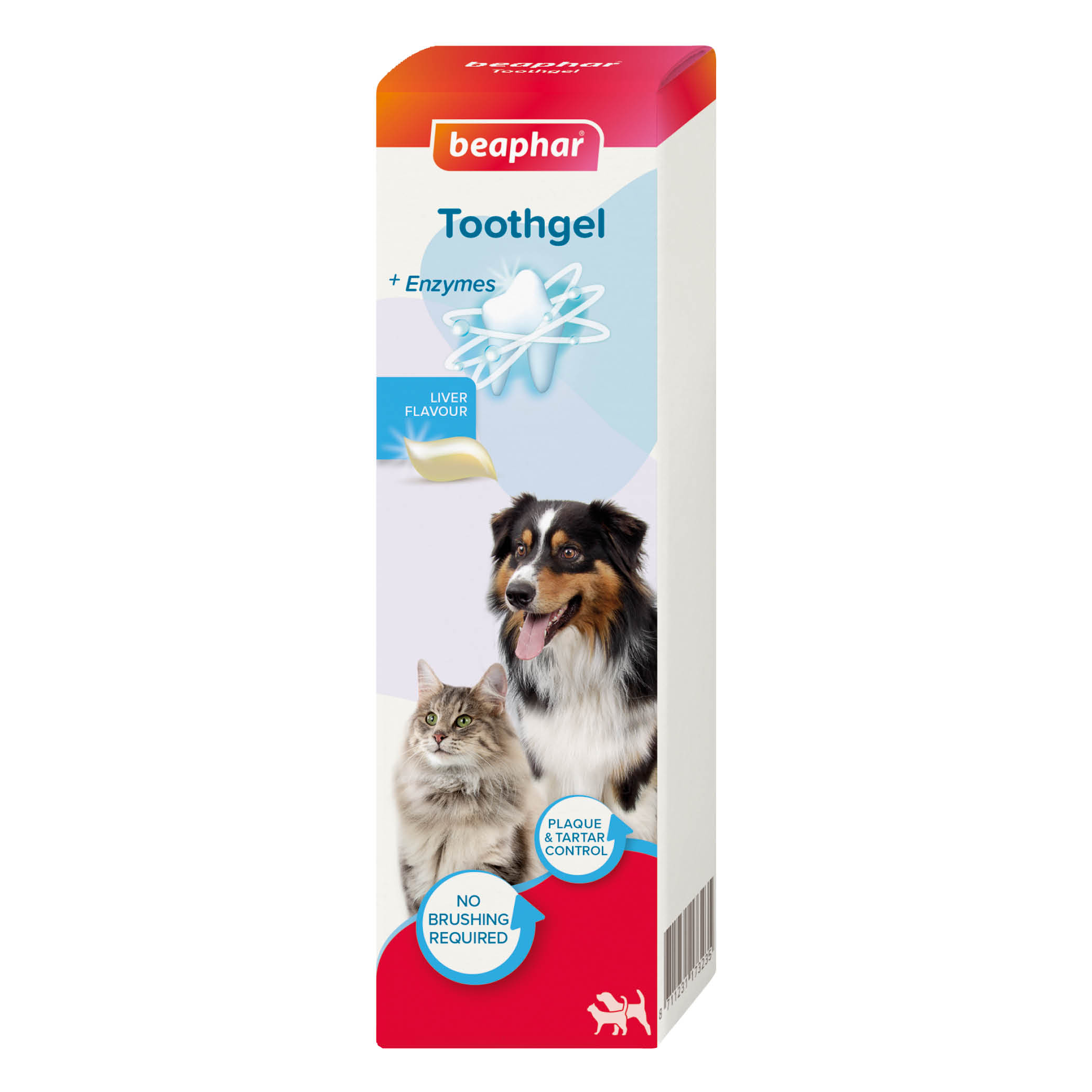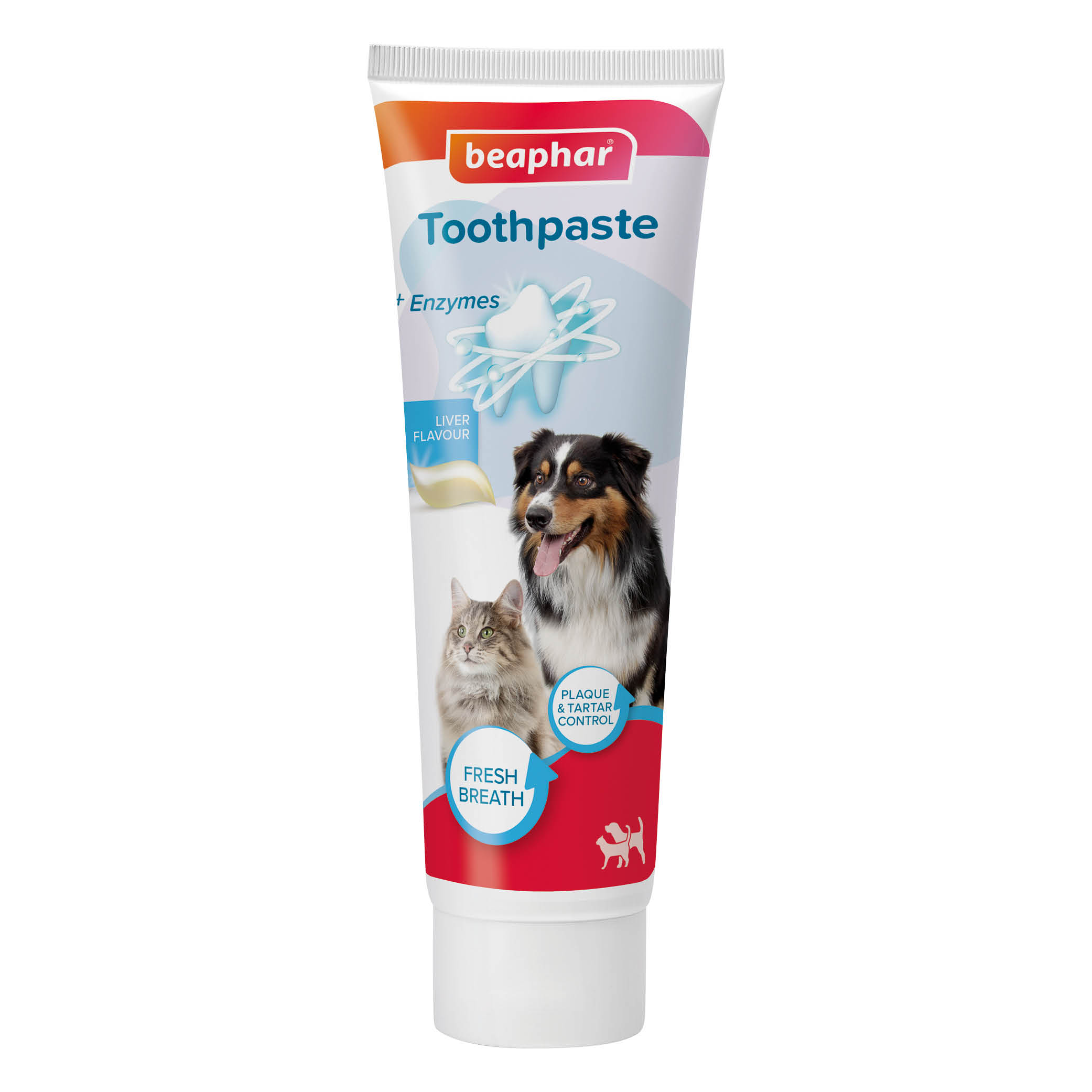Pet Dental Health Hub: Expert Tips, Products and Care Routines for Cats and Dogs
Introduction to pet dental health
Dental health is just as important for our pets as it is for us, with 80% of dogs and 70% of cats have already developed some form of periodontal disease by 2 years of age1,2,3. Good dental health is an essential part of a pet’s overall health, but this is often underestimated or overlooked. Poor dental health can lead to a build-up of plaque and tartar, causing gum inflammation, bad breath and even tooth loss if the condition progresses to periodontal disease. Not only does poor dental health affect the mouth, making eating and chewing uncomfortable, advanced periodontitis comes with serious health risks, and can affect the heart, liver and kidneys.
Teeth cleaning by a vet costs, on average, £2354, while tooth extraction can range between £300-500 depending on species5. When it comes to dental care, prevention is much better than a cure, both for your pet’s health and your finances!
Knowing what is and isn’t normal for each pet is important for owners to be able to quickly identify if a dental problem may be occurring. Our complete guide gives all the information you need to help keep your pet’s teeth in tip top condition.
How are cats’ and dogs’ teeth different from our own?
Our pet’s teeth play a similar role to ours, in that they are used to eat and chew. However, for pets they’re also a way to hold and pick up objects, and of course their tongues are used for grooming.
Cats and dogs are both naturally carnivorous (although dogs can adapt to other diets), and both have the dental structure accordingly. They use canines for catching and holding their prey, incisors to tear meat from bones and molars are used for mechanical digestion.
Kittens and puppies are both born with deciduous (or milk) teeth fully formed inside their skull. Deciduous teeth will fully emerge between 2-4 weeks old for kittens and 3-8 weeks old for puppies. Just the same as humans, kittens’ and puppies’ deciduous teeth are pushed out by emerging adult teeth; this is normally complete by 6 months old for kittens and 7 months old for puppies.
Occasionally deciduous teeth can be retained, causing complications and dental disease. It’s always best to have your pet’s teeth checked by a vet at 8 months of age to see if any deciduous teeth need to be removed.
What are the main causes of dental problems in cats and dogs?
The main causes of dental problems in cats and dogs are:
- Not having a regular dental care routine: poor oral hygiene allows plaque and tartar to build up on the teeth, which can lead to dental disease.
- Feeding an inappropriate diet: our pets can be fans of human food, whether it’s your dog giving you ‘puppy dog eyes’ at the dinner table or your cat sneaking leftovers from the kitchen. However, human food (and wet pet food) can stick to your pet’s teeth, causing dental decay if it’s not removed.
What does a healthy mouth look like?
The first step in maintaining your pet’s oral hygiene is knowing what a healthy mouth, teeth and gums look like for a cat or dog.
When checking your cat or dog’s teeth, the following indicates good oral health, with no signs of gum inflammation or periodontitis:
- Clean, white or slightly yellow teeth (if pet is older)
- Pink or dark pigmented gums with no redness, swelling, bleeding, or lumps
- Little to no visible plaque or tartar
Teeth can be kept healthy with daily dental care and regular dental check-ups from the vet.
How to check your pet’s teeth
Whether or not your pet has dental problems, checking their mouth is a great first step. Getting your pet used to having their mouth checked will make providing dental care much easier and less stressful for both of you. Regular checks also help you spot early signs and take action in time. We recommend checking your pet’s mouth once a month, and having their teeth checked by a vet at their annual checkup.
1. Start by touching the outside of their lips
Offer your pet a treat afterwards to create a positive association.
2. Gently begin lifting their lips
Once your cat or dog is comfortable with step 1, gently begin lifting their lips. Reward them each time they allow it.
3. Check their mouth
When your cat or dog is relaxed with their lips being lifted, carefully check their teeth and gums, starting from the front and slowly moving towards the back. Pay extra attention to the back and upper teeth, as these areas are more prone to dental issues.
TOP TIP: Always reward your pet throughout the process to make it a stress-free experience. If they show signs of discomfort at any point, pause and let them take a break. When starting again, go a little slower. Never rush, only move to the next step when they are completely at ease.
Common dental problems in cats and dogs
Many of the dental problems that cats and dogs suffer with are very similar to us:
Plaque and tartar: builds up around the gumline, but can easily be reversed with good at home dental care. If left untreated, plaque and tartar can lead to gingivitis.
Gingivitis: the first stage of periodontal disease, characterised by inflamed gums that may bleed when brushed. This can also usually be reversed with at home dental care, but may require a vet check if no improvement is seen to ensure it doesn’t progress.
Periodontal disease: there are four stages of periodontal disease. As already mentioned, stage 1 (gingivitis) is usually reversable with at-home dental care. Stage 2 can also usually be reversed after professional cleaning from a vet. Stages 3 and 4 are irreversible damage, and may result in tooth and jaw bone loss depending on the severity. Stage 3 and 4 also puts your pet at risk of secondary health complications, including kidney, liver and heart problems.
Persistent deciduous teeth: baby or milk teeth remain when your pet’s adult teeth start erupt, preventing them coming through properly. This is most likely to occur with the upper canine teeth, followed by the lower canine teeth. Your pet will require veterinary treatment to remove the deciduous teeth.
Gum overgrowth: excessive gum tissue growth occurs, causing teeth to become partially covered. This can make the teeth hard to clean, causing plaque build-up. Boxers are a breed prone to gum overgrowth. Veterinary referral is required, and potentially corrective surgery.
Broken or chipped teeth: can be caused by chewing or a fall/injury. Periodontal disease weakens the teeth as it advances, so pets suffering with it may be more likely to break or damage their teeth. Consult your vet as soon as possible if you suspect your cat or dog has a broken tooth. Broken or chipped teeth are at risk of infection, and the damage may require surgical repair to tooth removal.
Worn teeth: heavy chewing or biting can cause teeth to wear down, exposing the nerve. This can cause pain for your pet and put them at risk of infection. Veterinary consultation is required.
Stomatitus: inflammation of the mucous lining of the mouth resulting in oral pain, swollen gums, and ulcers on the tongue, gums, lips and back of the throat. In cats there is no specific cause but it is often a sign of an underlying bacterial or viral infection. In dogs, it is usually caused by cuts, allergic reactions or poor dental hygiene. Consult a vet as soon as possible.
Signs and symptoms of dental problems
Some dental problems are noticeable without looking at your pet’s teeth, but others can only be seen during a routine health check, either by yourself or a vet.
When checking your pet’s teeth, look out for the following:
Bad breath (Halitosis) : A constant unpleasant odour
Plaque/tartar build-up : Yellow or brown in colour, if left untreated it will develop into gingivitis
Bleeding/reddening of the gums (Gingivitis) : In saliva, on toys, in the food bowl or on chew treats. Gingivitis is stage 1 of periodontal disease.
Loose or missing teeth : Teeth may fall out after eating or chewing
Excessive drooling : Dribbling saliva, may indicate discomfort, and can cause fur staining around the mouth or front legs
Difficulty eating (possibly leading to weight loss) : Eating less, dropping food, favouring soft food or only eating on one side
Signs of pain or discomfort : Pulling away or reacting when touched near the mouth, pawing at the mouth, head shaking, whining, or jaw chattering
Changes in behaviour : Your pet may not be themselves, and may be reluctant to go for a walk, play or do other things they usually enjoy
Have you noticed any of these dental red flags?
Yes, I have noticed some of these signs
Dental problems such as bad breath, plaque/tartar and gingivitis can normally be resolved with regular at-home dental care. However, bad breath can also be a sign of other health issues, such as kidney problems, so it can be wise to visit your vet.
If you’ve noticed several signs, it is best to consult your vet for a thorough check-up. Your pet may have more advanced dental problems.
No, I haven’t noticed any of these signs
Great! However, cats and dogs are experts at hiding pain, so dental problems sometimes go unnoticed. Continue to check your pet’s mouth and provide regular dental care to maintain their oral health. If you notice any changes, seek veterinary advice quickly to avoid further problems developing.
How to start a simple dental care routine for your pet
The secret to maintaining clean and healthy teeth is to start a simple dental care routine that fits your pet and your lifestyle. Your pet’s dental care can begin at any age, it’s never too late to start.
Puppies are kittens are naturally curious and open to new experiences, making it the perfect time to start. Early brushing increases comfort with dental care as they grow, establishes positive habits and makes dental care a seamless part of their daily routine.
Even if you have an older pet, with time, care and training dental care and toothbrushing can become an enjoyable part of your pet’s day.
Whatever their age, it is important to introduce dental care and teeth cleaning slowly. Steadily building up each step avoids it becoming a stressful experience for you both.
Although daily brushing is the gold standard of dental care, brushing 2-3 times a week can also be effective. On non-brushing days, you can use a non-brushing dental alternative.
Choosing the right dental care products for your pet
The first step in your pet’s dental car journey is choosing the right products. It is important to not use human dental care products on your pet as these products usually contain fluoride and/or xylitol. Fluoride and xylitol are toxic to cats and dogs, and both can result in serious health problems. In addition, human toothpaste contains a foaming agent, which if swallowed will irritate your pet’s stomach.
Instead, look for pet dental products that contain enzymes. Enzymes are well-known to help reduce plaque and freshen breath. Beaphar Liver-flavoured Toothpaste, Beaphar Peppermint & Parsley Toothpaste, Beaphar Puppy Toothpaste and Beaphar Toothgel are all specially formulated with enzymes, as well as fluoride and xylitol-free.
When choosing a pet toothbrush, choose one with multi-sized heads. The ensures there is a brush head size to suit your cat or dog’s mouth, no matter how big or small. Both offers two toothbrush options; our regular plastic Beaphar Toothbrush with ergonomic handle to make it easier to grip, and our Beaphar Bamboo Toothbrush made from 100% sustainably sourced bamboo and coated in beeswax to help protect against water and humidity. Both toothbrushes have varied-length bristles to ensure deep-cleaning in even hard-to-reach areas of your pet's mouth, helping to keep teeth clean and healthy.
Brushing your cat or dog’s teeth
Some owners find the prospect for brushing their pet’s teeth daunting. But did you know, you only need to brush your cat or dog’s teeth for just 60 seconds a day? Aim to brush each quadrant of your pet’s mouth for 15 seconds, and then you’re all done!
Tongue-facing surfaces do not need brushing, as they benefit from a natural cleaning effect from the tongue.
If your pet is not comfortable with brushing, focus on brushing at least the back and upper teeth, as these areas are more prone to plaque and tartar
How to brush your pet’s teeth
With just 4 simple steps and 60 seconds a day, you can easily add daily brushing to your pet’s routine.
Step 1: Lift the lips to expose the teeth
Step 2: Run your finger along their teeth
Step 3: Squeeze some toothpaste onto your finger and allow them to lick it off
Step 4: Introduce a toothbrush
Check out our blog for a more detailed step-by-step guide to brushing your cat or dog’s teeth, or watch the video below
How to look after your pet’s teeth without brushing
Some pets are not fans of tooth brushing – we get it! Tooth brushing should not be a stressful experience for you or your pet. Whether you’re in the process of a introducing tooth brushing to your pet and want to provide in-between dental care, or tooth brushing is a complete no-no for your pet and you need an oral hygiene alternative, there are a range of no-brushing alternatives you can consider.
We’d recommend Beaphar Toothgel – this alternative brushing product contains enzymes, which are known to help break down plaque and help reduce tartar build-up. It’s a tasty liver-flavour meaning most pets love it. You simply apply a thin line of gel across your pet’s gumline; their tongue spreads the gel around the teeth and then you leave it to work its magic.
Other no-brush dental products you could consider are:
- Dental powder: simply sprinkle over your pet’s food
- Water additives: add to your pet’s daily drinking water
- Sprays: spray into your pet’s mouth
- Sticks & treats: everyone likes to treat their pets, and these ones have an added benefit
These non-brushing products are not just great alternatives for brushing. They are ideal to use in combination with daily brushing or to support oral hygiene in-between cleaning if you only brush 2-3 times a week.
The Beaphar Dental Care Range includes all these product types, and all are suitable for both cats and dogs.
Make your own dental care routine for your pet
Now you know all about pet dental health and oral hygiene, it’s time to craft your own dental care routine for your pet.
To give you some inspiration, here’s some recommended weekly dental routines from using products from the Beaphar Dental Care Range:
Pet dental routine 1: Gold standard
Daily brushing: Beaphar Toothbrush & Toothpaste Kit
Daily dental support: Beaphar Dental Powder or Beaphar Plaque Away Drinking Water Additive
Pet dental routine 2: Silver standard
Monday - Start the week easy with: Beaphar Dental Powder
Tuesday - Brushing time: Beaphar Toothbrush & Toothpaste Kit
Wednesday – Take a break between brushing: Beaphar Dental Powder
Thursday - Brushing time: Beaphar Toothbrush & Toothpaste Kit
Friday – Relax, almost the weekend: Beaphar Dental Powder
Saturday – Brushing time: Beaphar Toothbrush & Toothpaste Kit
Sunday – End of the week, let’s keep it simple: Beaphar Dental Powder
Pet dental routine 3: Bronze standard
Monday - Start the week easy with: Beaphar Dental Powder
Tuesday – No-brush brushing: Beaphar Toothgel
Wednesday – Take a break between ‘non-brushing’: Beaphar Dental Powder
Thursday – No-brush brushing: Beaphar Toothgel
Friday – Relax, almost the weekend: Beaphar Dental Powder
Saturday – No-brush brushing: Beaphar Toothgel
Sunday – End of the week, let’s keep it simple: Beaphar Dental Powder
Download our weekly routine chart to design your pet’s weekly oral hygiene routine and help you keep on track!
Common Pet Dental FAQs
Will my pet like the toothpaste?
It is a liver-flavoured toothpaste that is fluoride-free and readily accepted by dogs and cats.
Will the toothbrush be too big for my cat or smaller dog?
The Beaphar Toothbrush is an ergonomic, double-ended toothbrush. With varying length bristles, this toothbrush is designed to target hard-to-reach areas and provide a comfortable, superior clean. This double-ended toothbrush has too sizes; the smaller end is suitable for smaller mouths and ideal for cats.
Why do I need to brush my pet’s teeth?
Regular toothbrushing is the gold standard approach to dental care. Nothing compares to regular brushing when taking care of your pet’s teeth. Regular tooth brushing helps to prevent plaque build-up, tooth decay and bad breath.
How does the Dental Powder work?
Beaphar Dental Powder contains 100% natural seaweed. Brown seaweed (Ascophyllum Nodosum) has proven properties to counteract underlying causes of tooth decay. Even after ingestion, it continues to work with your pet’s saliva to break down and reduce tartar build up and bad breath. It aids long-term oral care and prevents dental disease. It is safe and effective for all pets to use.
Not only is brown seaweed proven to be extremely effective for dental care, it is also a naturally dense form of minerals, proteins and amino acids, which are vital to supporting immunity, coat condition, stamina and digestion.
Will my pet put on weight eating Beaphar Dental Powder?
Beaphar Dental Powder is free from additives, preservatives and added sugar. This makes it ideal for a calorie-controlled diet. Beaphar Dental Powder contains 100% natural brown seaweed, which is finely ground and added to your pet’s food.
Can I use this instead of brushing my pets’ teeth?
For a healthier mouth between brushing, we recommend that you brush your pet’s teeth daily, a gold standard in dental care. However, for some of us who struggle with this, Beaphar Dental Powder complements your cat and dog’s oral care regime helping fight plaque and bad breath, providing complete protection between brushing.
How often should my pet’s teeth be checked by a vet?
We recommend having your cat or dog’s teeth checked by a vet at least once a year, and doing an at-home dental check once a month. Most vets will check your cat or dog’s teeth during their annual check-up. If you have any concerns about your pet’s oral health, especially if they show any of signs mentioned on this page, book a vet consultation as soon as possible.
Is dental cleaning under anaesthetic safe for pets?
Having your pet undergo any medical procedure under anaesthetic can be worrying for pet owners. For healthy pets, yes dental cleaning under anaesthetic is considered relatively safe. All pets are assessed before undergoing anaesthetic and will be monitored by professionals during the procedure. If you have any concerns or your pet has any additional medical needs, your vet is best placed to answer any specific questions.
Why does my pet have bad breath, even after cleaning their teeth?
While bad breath is a common sign of dental problems, it can also be an indicator of other health issues, including kidney problems. If you’re regularly cleaning your cat or dog’s teeth but they still have bad breath, consult a vet for further investigation.
Are dental sticks, chews or treats effective?
There are many dental chews and treats on the market, and for owners of particularly fussy pets they seem like a great alternative to brushing. However, not all dental sticks, chews and treats are created equal, and their effectiveness depends on several factors, including:
- Ingredients
- Shape and size
- How long they take to chew
- The pet’s natural chewing action
The effectiveness of dental sticks is linked to the mechanical action of chewing, which helps scrape away plaque and tartar build up on the teeth. However, they only work on the teeth your dog uses to chew. If your dog finishes the chew too quickly, the benefit for their oral health will be minimal.
Star-shaped sticks are considered the best kind of dental sticks as the multiple points and edges mean they reach more areas of the teeth.
When it comes to ingredients, you want to look for ingredients such as brown seaweed, which helps fight plaque and tartar, and remains effective even after ingestion, and chlorophyll, a natural plant extract that fights bad breath.
Check out Beaphar’s range of dental treats, including star-shaped dental sticks:
Are some dog breeds more prone to dental problems than others?
Yes, smaller dog breeds such as Yorkshire Terriers, Dachshunds and Chihuahuas are more prone to dental problems. This is because all dogs, no matter their size, have the same number of teeth. In smaller dogs this leads to overcrowding, meaning plaque and tartar can build up more easily. It can also lead to tooth misalignment and other problems.
Greyhounds are also at greater risk of dental problems as have thinner enamel than other breeds.
If you own a dog breed that is more prone to dental problems, speak to your vet about the steps you can take at home, and ask if they require more regular checkups.
References:
1 – LobpriseHB, Dodd JR, editors. Wiggs’s Veterinary Dentistry: Principles and Practice. 2nd ed. New York, New York: Wiley; 2019. pp. 81–108.
2 – Harvey CE. Periodontaldiseasein dogs: Etiopathogenesis, prevalenceand significance. Vet Clin North Am Small AnimPract. 1998;28:1165–1188. doi: 10.1016/s0195-5616(98)50105-2.
3 – KortgaardHE, Eriksen T, BaelumV. Periodontal disease in research beagles: An epidemiological study. J Small AnimPract. 2008;49:610–616. doi: 10.1111/j.1748-5827.2008.00609.
4 – https://manypets.com/uk/articles/dog-teeth-cleaning-how-to-save-on-dental-care/#how-much-does-dog-teeth-cleaning-cost.
5 – https://www.waggel.co.uk/blog/post/pet-dental-care.


